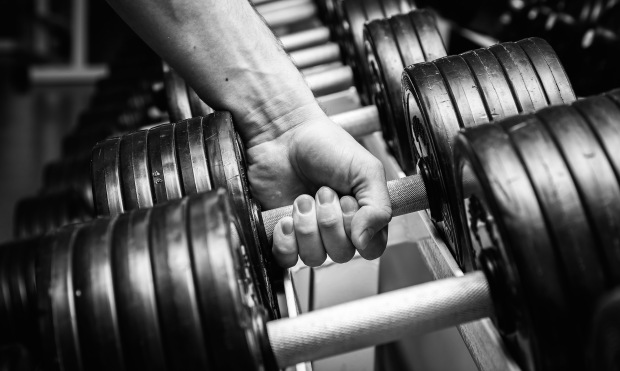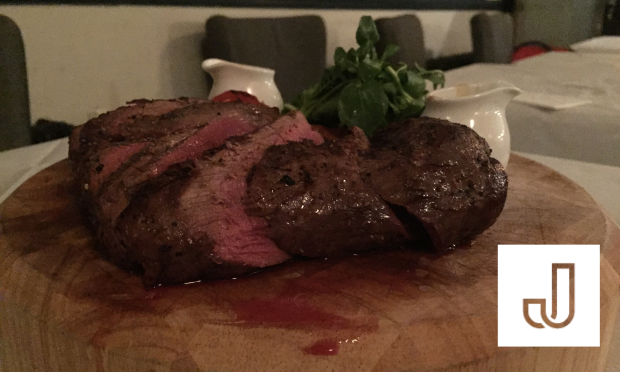
Before I answer that, I’d first like to tell you WHY you should get stronger. As a strength coach I’d tell you that “all else being equal (skill, fitness, etc.), the strongest athlete will always win”. But beyond being able to bully the opposition in the athletic arena, strength training is also essential for the following game-changers:
Improve your body composition
It is vital that you prioritise your goals before starting a training plan. If your objectives are aesthetics and conditioning then your focus should be nutrition and resistance training (in that order). Not spending hours on the treadmill.
Strength training is the best strategy to get you both strong and lean because it causes a significant afterburn effect, also referred to as excess post oxygen consumption (EPOC) – the body consumes >24% more calories for over 24 hours post-workout, replenishing fuel stores, restoring hormonal equilibrium and stimulating muscle and bone growth, breaking down fat stores in the process [High Intensity Interval Resistance Training influences REE and RER by Paoli et al.]
Build bone
Bone mineral density declines after the age of 30. For women, menopause accelerates bone loss when their estrogen drops sharply. In turn, men suffer from more insidious bone loss as testosterone levels graduly decline. The best strategy to increase bone density is strength training with exercises that load the spine and hips with heavy loads – squats and deadlifts. A Minimum Essential Strain is needed to promote bone growth, anything less than 80% 1RM isn’t going to cut it (more on that later). This may not seem like a pressing concern now, but you’ll thank me when you’re older.
Improve your hormonal milieu
Whilst strength training increases testosterone levels in men, long-distance running actually lowers their testosterone. A study published in the August 2000 issue of the British Journal of Sports Medicine revealed that running for longer than two hours or a cumulative distance of more than 40 miles a week suppresses testosterone levels. Combine that with a caloric restriction and low-fat diet and your heading for hormonal mess.
Training
The first 30% of strength gains come from improved inter-muscular coordination. You must learn to lift. Not only are you looking for a physiological adaptation to the training stimulus – getting stronger and leaner – you are also trying to teach your body to become more efficient: increasing the activation, synchronisation and firing rate of your muscle’s motor units. A beautiful thing.
Reps and rest
The two key variables to consider when strength training are reps and rest. The reps are inversely proportionate to the rest period – the lower the reps, the longer the rest period.
Intensity
Some lifts require coaching and spotting at higher intensities, but working off your 1 Rep Max (the weight, with sufficient motivation, you could lift only once), the intensity of your lifts should between 85-100% of this number. Caveat: technique and (in the majority of cases) range-of-motion should take precedence over the weight on bar – remember, you’re training for strength and not ego gains.
Recovery
One thing I often have to teach new clients, especially those with a predisposition to endurance events, is to respect the rest intervals. They seem to be in a rush to repeat the exercise, only to perform below-par subsequent sets because they haven’t sufficiently recovered. You need to adhere to the “Law of Repeated Effort”.
As sets last less than 20 seconds, ATP-PCr is the dominant energy system to fuel your workout. Rest long enough to regenerate sufficient ATP energy to repeat the reps at the same (or greater) weight. ATP-PCr is almost completely restored following a 4 minute rest interval.
Aside from time-under-tension (duration of set), this is the main difference between training for strength or body composition: complete vs. incomplete recovery.
Exercise selection
Apart from assistance exercises and exercises prescribed to address any structural balances you may have, the focus of your workouts should be dedicated to the big, multi-joint exercises – any derivatives of the obvious: squats, presses and deadlifts.
Supplementation
A cocktail of novelty supplements isn’t necessary, but one I would strongly recommend is Creatine Monohydrate. The most widely researched supplement, studies have consistently demonstrated improved training adaptations at a cellular level. Here’s how it works: supplementation increases creatine storage, promoting faster ATP regeneration between sets, leading to strength and hypertrophy gains.
 Meals containing EXACTLY the same amount calories but different macro splits (protein, carbohydrate and fat), can have contrasting effects on perceived hunger and your subsequent food intake.
Meals containing EXACTLY the same amount calories but different macro splits (protein, carbohydrate and fat), can have contrasting effects on perceived hunger and your subsequent food intake.


